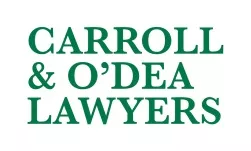- within Litigation and Mediation & Arbitration topic(s)
- with Inhouse Counsel
- in Australia
- with readers working within the Retail & Leisure and Law Firm industries
The recent case of Phothisenh v AAI Limited t/as AAMI [2025] NSWPIC 338 offers valuable guidance on how the Motor Accident Injuries Act 2017 (NSW) ('MAIA') can apply to claims for the cost of privately transporting an injured child to and from school.
The case confirms that a claim for school transport may fall within the statutory definition of "treatment and care" under section 1.4 of the MAIA, specifically as a form of rehabilitation, transport modification, or attendant care services. It also draws a clear distinction between compulsory education and education or training that is compensable as a form of treatment.
Background
The claimant, a five-year-old girl, was seriously injured while riding her scooter across a pedestrian crossing with her mother on 18 July 2023. Although one vehicle stopped, the insured driver failed to do so and collided with the child. She suffered facial injuries and fractures to both femurs, requiring use of a wheelchair for some time after the motor vehicle accident.
A dispute arose as to whether the cost of transporting her to school via private transport (for example, Uber) was compensable under the MAIA as "treatment and care".
Key legal issues
The Member was asked to determine whether the school transport expenses constituted "treatment and care" under section 1.4 of the MAIA.
That definition includes a non-exhaustive list of 12 categories, including:
- Rehabilitation
- Home and transport modification
- Attendant care services
- Education and vocational training
The Member considered each of the following arguments:
- Is transport to school a claim for "education and vocational training"?
No. The Member held that "education and vocational training" under the MAIA is limited to education or training required as a consequence of the injury, not compulsory schooling. For example, a brain injured child who needs specialist learning support might fall within this category, but ordinary school attendance does not.
- Is school transport "rehabilitation"?
Yes, in part. Rehabilitation is defined in section 1.4 as enabling or attempting to enable the injured person to attain and maintain:
- Independent living
- Full physical, mental, social and vocational ability
- Full inclusion in all aspects of life
The Member accepted that school participation is part of a child's inclusion in social life. Transport that enables a child to attend school could therefore be part of the rehabilitation process, particularly where injury limits the child's ability to attend without assistance. The question of whether rehabilitation is ongoing is a medical assessment matter, not a legal one.
- Is use of uber a "transport modification"?
Yes. The child previously used public transport. Due to the injuries, she required travel by private vehicle, an alteration to the pre-injury mode of transport. That change, the Member found, satisfied the meaning of "transport modification" under the MAIA.
- Is accompanying a child to school an "attendant care service"?
Yes. Accompanying a young, injured child to school, particularly when the injury prevents independent travel, can constitute "attendant care services". These services, under section 1.4 of MAIA, include assistance with "everyday tasks" such as personal assistance or domestic services.
While a parent may have otherwise accompanied a five-year-old child to school, the change in transport method from public to private vehicle was found to be attributable to the injury, and therefore a form of compensable care.
Decision
The Member concluded that the claim for private transport fell within the definition of treatment and care in section 1.4, and specifically under:
- Rehabilitation
- Transport modification
- Attendant care services
Whether the private transport was reasonable and necessary and causally related to the injuries was a medical assessment matter to be determined by a Medical Assessor. Any later dispute about the cost of transport would be a merit review matter.
Why the decision matters
The case of Phothisenh illustrates the overlapping nature of the "treatment and care" categories under the MAIA. The Member recognised that a single service here, private school transport can fall under multiple categories, broadening the potential for claimants to seek support for real world needs arising from injury.
Importantly, the decision reinforces the separation of functions under the MAIA. The Member's task was limited to classifying the nature of the claim. Whether that claim is reasonable and necessary, or injury related must be addressed through the medical assessment process.
The content of this article is intended to provide a general guide to the subject matter. Specialist advice should be sought about your specific circumstances.



